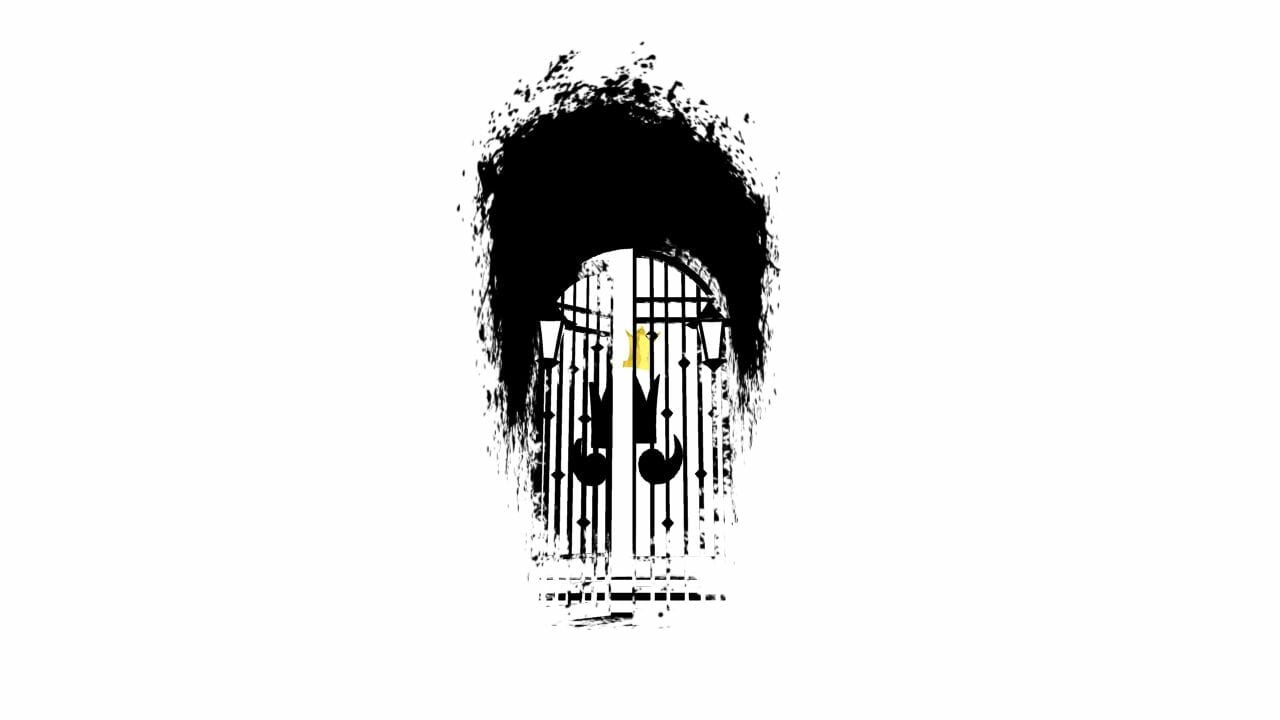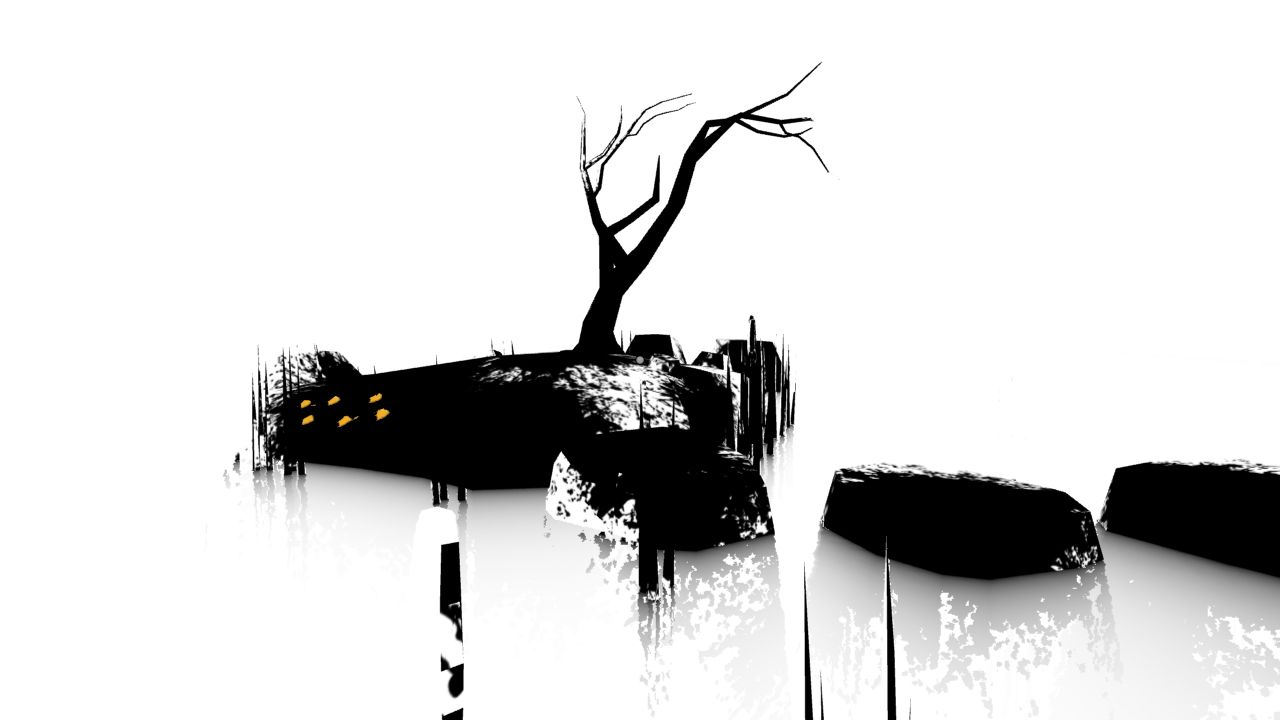
I really liked what I saw of The Unfinished Swan at E3 this past summer. It was a refreshing change from the thirty or so other games I played that week. Instead of genocidal space soldiers and paramilitary attack squads with multiple accents, Swan was a soothing interactive storybook. With black text and line drawings on a stark white background, it felt like a Shel Silverstein book that moved and talked. It might be the only game I played at E3 that never once asked me to slit throats or snap necks. Between the monochrome art and general lack of player instruction The Unfinished Swan’s E3 demo displayed a game with an assured sense of both self and style. Both are rare within this industry.
Then and now Swan makes an excellent first impression. The very beginning of the game was the first level shown at E3. It’s a completely barren white screen whose hidden contours have to be discovered and shaded in by the player, forcing you to stagger around in a white void with few hints or explanation. It establishes the actual play as a challenging and experimental counterpoint to the twee story. The second level I played at E3 replaced that mystery and austerity with relatively mundane first-person platforming involving vines and a water hose. It was still visually compelling but less inspired than the opening scene. Still, it was hard to leave E3 without anticipating this game.
I’ve now played the whole thing. The charming aesthetic remains, and it definitely explores a few interesting ideas within the well-populated world of puzzle platformers. Per the book aesthetic the game is broken up into multiple chapters. Chapters often introduce a new central mechanic and then run through a variety of increasingly less obvious applications of that mechanic. Beyond painting in the level architecture or reinvigorating dried up vines with water, you’ll shoot luminescent flowers to light darkened forests and turn cranks to move obstacles or flood empty canals.
The best wrinkle after the initial inkblots comes near the end, when you create three-dimensional geometric shapes on a gargantuan blueprint to climb through the shell of an abandoned house. It becomes a platformer where you have to make your own platforms, crafting squares and rectangles in order to explore the house, and lightly disorienting you by shifting between two different versions of the same building. You won’t confuse Swan’s style or play with any other game.

There’s also a sidebar for the collector crowd, as there are a certain number of balloons hidden in each level. You can buy new abilities with those balloons, such as the power to store up and unleash multiple shots at once, or a radar system that lets you know when you’re close to a balloon. None of these perks dramatically impact the game, but finding and selling balloons adds a traditional gaming mechanic to a title that’s otherwise short on them.
Sadly The Unfinished Swan doesn’t entirely live up to its initial promise, at least on a narrative level. The set-up is fine: You play an orphan, Monroe, who was abandoned by his father and whose mother could never finish any of the paintings she started. Monroe takes an unfinished painting of a swan with him to the orphanage after his mother passes on. Through a bit of dream logic Monroe enters the painting after the swan disappears and finds a world created by a bored king who eventually abandons it in favor of a tower built in his image. After touring the king’s gardens and city Monroe spies the monument and heads out towards it. If you thought Papo & Yo was too emotionally honest you might prefer The Unfinished Swan’s purposefully elliptical take on father-son drama. It’s like a videogame To the Lighthouse if the lighthouse is actually a massive statue of your dad in a crown.
The story grasps for poignancy but is undermined by a forced and diminishing whimsy. A good children’s book never loses sight of the message underneath the fanciful details and charming language, but Swan’s point is barely sketched and intermittently mentioned by spotty prose that seems more interested in being cute and quirky than telling a coherent story. Beneath the illogical and fantastical a children’s book should still tell a satisfying story that makes sense within its own nonsensical framework. The Unfinished Swan doesn’t do that, and that minimizes the game’s dramatic and emotional impact.
The story is also mostly told via storybook pages that are completely optional. They’re discovered on walls throughout the game’s levels, but you have to shoot them to see the words and drawings. You can sprint through the entire game without reading a single page. They’re absolutely central to the conclusion, though, which would make even less sense if you hadn’t been reading those pages. Making them easily ignorable is a baffling decision.
The Unfinished Swan’s story doesn’t need to be as prosaic as its art style. I appreciate its metaphorical aspirations but it’s a little too vague and the writing itself is not as charming as it hopes to be. That doesn’t detract from the play itself, though, and between the mechanical twists and striking art design The Unfinished Swan is an experience that’s hard to forget.
The Unfinished Swan was developed by Giant Sparrow and published by Sony. It is available for the PlayStation 3 through the PlayStation Network.
Garrett Martin edits Paste’s games section and reviews games for the Boston Herald and elsewhere. He really can’t wait for this election to be over. You can follow him on Twitter, if you’d like.